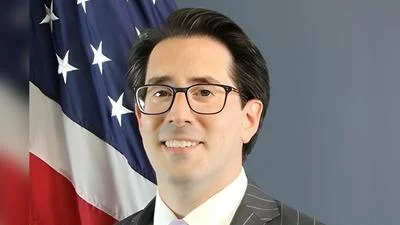IDAHO FALLS, Idaho - Workers at the Idaho Site ’s Advanced Mixed Waste Treatment Facility (AMWTP) are using a new tool to more safely and efficiently handle drums containing high fissile gram equivalent (FGE) material.
Crews with EM cleanup contractor Fluor-Idaho now access Port 16 in the floor of the facility’s South Boxline, a large concrete and metal hot cell where the containers of radioactive waste are opened and sorted without exposing workers to the hazardous materials inside. Drums with high FGE material are sent through this egress and reintroduced to the boxline for additional processing.
During the second processing, a drum is reopened and its contents are altered to reduce the amount of high FGE material. Next, the repackaged drum is again sent through an assay system to verify its FGE count is below 200, which is required before containers can be treated using the supercompactor, a machine used to reduce the size of drums.
Fissile material is composed of isotopes capable of sustaining a nuclear chain reaction. These isotopes behave somewhat differently from one another, but they’re measured by comparing each isotope to plutonium 239, which is where the term FGE comes from.
Port 16 eliminates a time-consuming system for processing drums. Workers previously moved drums containing high FGE material from the facility to a secure area for repackaging before returning them to the facility. For example, it took workers several weeks to process and treat eight drums with high FGE waste in a previous campaign; in the most recent campaign, they processed three drums containing FGE waste in four hours.
Port 16 was part of the facility’s original construction, but challenges to establishing the operating parameters for moving drums through the port meant that personnel could only focus on other waste that could be more easily processed through the supercompactor. With more high FGE waste for processing, the efficiency of Port 16 became more apparent, so employees created the operating control set to allow its use.
AMWTP is used to retrieve, process, and ship for disposal legacy contact- and remote-handled transuranic waste sent to the site from the now closed Rocky Flats Plant in Colorado. The waste is primarily composed of industrial debris, soil, and sludge from the Cold War-era manufacture of nuclear components.
To date, workers at the facility have treated and shipped 57,300 cubic meters of waste out of the state in accordance with an agreement between DOE and the State of Idaho.
Source: U.S. Dept. of Energy, Office of Environmental Management








